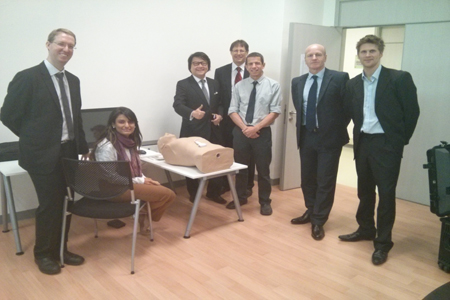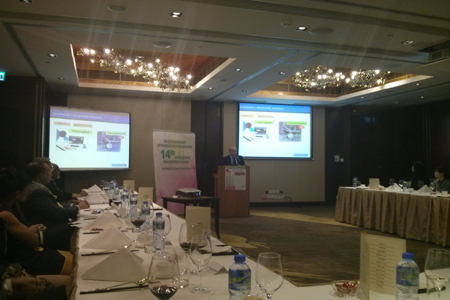Recently I was invited to attend an ultrasound simulation workshop in Macau’s University hospital, organised by the department of Health Sciences at the Macau University of Science and technology (MUST). Lectures, scanning demonstrations and hands-on training was provided by experienced overseas medical experts and two brand new state of the art ultrasound simulators were showcased.
As a health coach I focus on disease prevention and staying healthy, but of course this cannot always be the case. Over the 2 days that I attended the event, my eyes were opened to fabulous technology and real advantages that can be offered to all of us, both in sickness and in health.
(From left to right, Mr Ori Dotan from Simbionix, Israel, Dr Saba Salman from Royal Perth Hospital, Australia, Mr Billy Chan, Deputy Dean of MUST Health Sciences Faculty, Dr Ross Horley, University of Notre Dame, Australia, Dr Avinoah Ironi from Sheba Medical Center, Israel, Mr Stuart Gall from Medaphor, UK and Mr Chris J Bradshaw from Huafa New Town Community Hospital, China)
Ultrasound in Medicine meets Virtual Reality Technology
It seems that simulation technology is becoming a very positive part of medical education and patient care. The machines that I saw and tried out allow sonographers to train and learn without actually having to see an actual patient! That is until they are confident enough and have the necessary skills to begin the real thing! Computer simulations, interactive mannequins, scenario roleplays and e-learning are all brought together to enable less medical errors and increased patient care and safety. Costs are also saved so it’s a real win win situation.
Many of the lecturers agreed that simulation technology and techniques need to become a mandatory method for all forms of medical education as well as for the actual maintenance of skills and learning. Simulation technology is used in the aviation, mining, rail and shipping industry so why is it not used across the board in the medical industry too? Dr Ross Horley from the University of Notre Dame, Australia said there needed be a “culture shift, a change of attitude” for this to really take effect.
(Evening presentations at the Dinner symposium commemorating the 14th anniversary of the founding of MUST)
A patient free environment where someone is allowed to make mistakes, not suffer any consequences (except for learning something new!) and being part of a “no blame” culture seems to be the real advantages of virtual reality ultrasound diagnostics. It is now being implemented in many locations around the globe in emergency medicine, obstetrics and gynecology, general medicine and for instrumental guidance techniques. In my opinion, this is the way forward for medical training. The machines that I saw at this event should be in every medical school and hospital across the world being used everyday.
Simulation technology is disrupting the status quo of how we train, learn and look after our sick. It is certainly a fast and growing disruptive force, but one that in my opinion is definitely a positive one.
What do you think?











Leave A Response